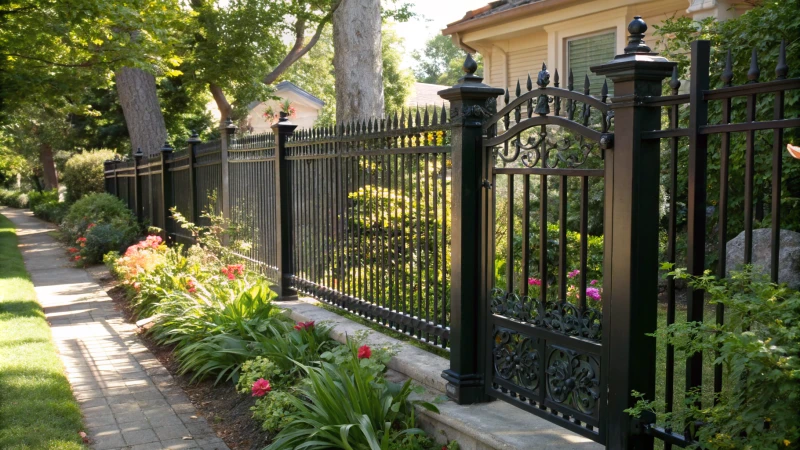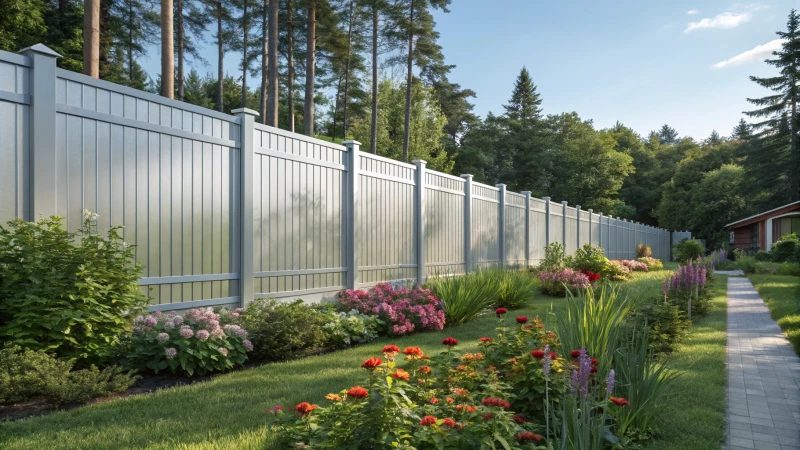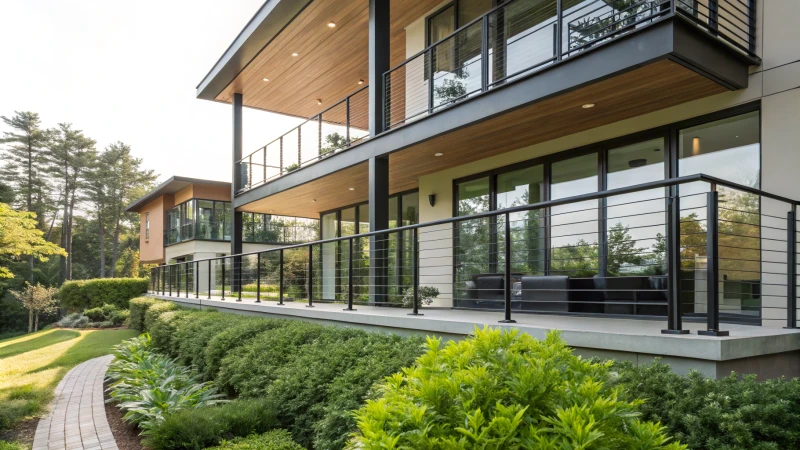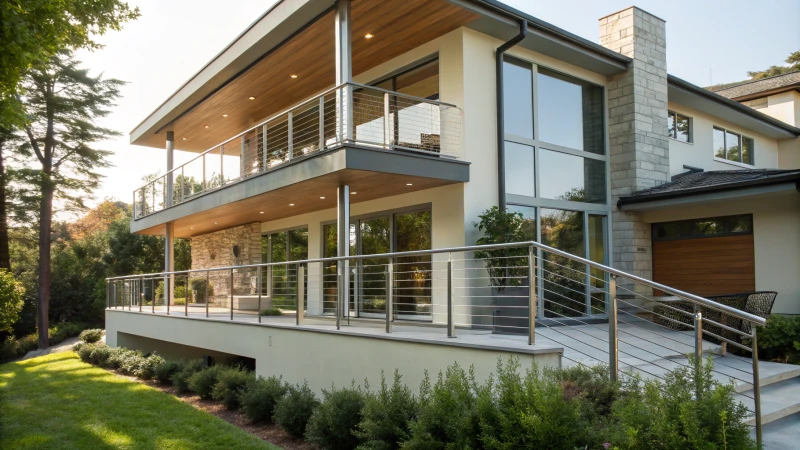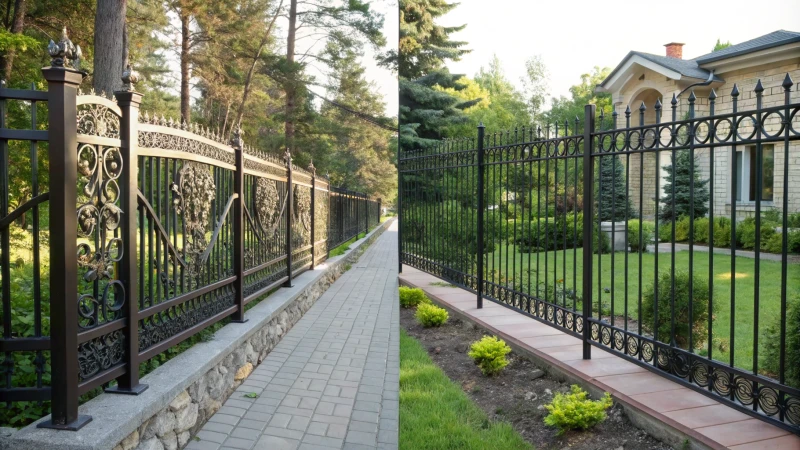
The first time you picked a railing for your home might be a vivid memory. That choice probably seemed important. You perhaps wanted something both functional and attractive. Many people often look for a railing that fits the style of their house. It’s not just about support; it’s about appearance too. Railing selection might seem like a small detail, but it really contributes to the overall design. It’s a big decision in home decoration.
Aluminum railings present a great option for any homeowner. They offer strength and last a long time. They need very little maintenance. Wood railings rot and warp over time. Steel railings rust. Aluminum does not. This resistance makes aluminum railings ideal for different weather conditions.
Aluminum has many benefits. Some seem obvious. But there’s much more to learn. This guide explores why aluminum railings are better than other materials. It helps with home improvements. You will find personal stories and practical advice. Let’s discover how aluminum improves your space.
Aluminum railings require regular painting to prevent rust.False
Aluminum is resistant to rust, so it doesn't need regular painting.
Aluminum railings are more durable than wood railings.True
Aluminum does not rot or warp, making it more durable than wood.
Why Choose Aluminum Railings for Your Outdoor Space?
Picture stepping onto your deck. You feel very sure about its safety and style. Aluminum railings provide this sense of security and elegance.
Aluminum railings offer advantages such as being lightweight yet strong. They resist corrosion and need little upkeep. This quality makes them ideal for outdoor spaces. They endure weather conditions without rust. This brings peace of mind and assures long-lasting value.
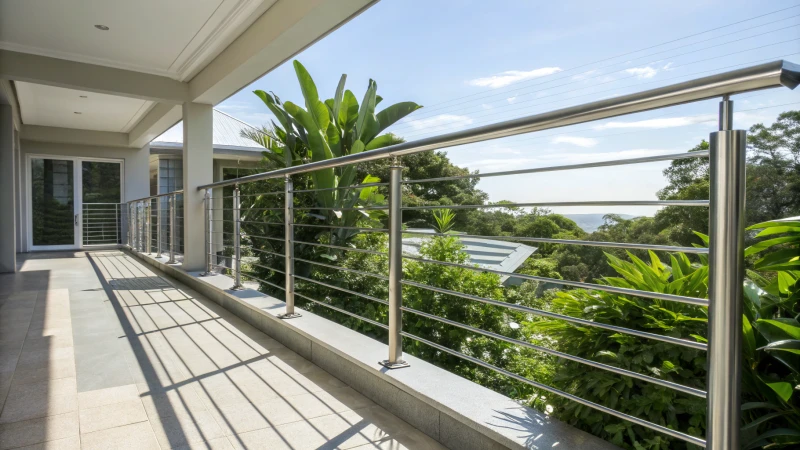
Durability and Longevity
I still remember installing my first aluminum railing. It changed everything for me! Unlike wood, which would warp under the harsh sun, aluminum stayed strong. It feels reassuring to know your choice won’t surrender to the weather. It’s like having a reliable friend through rain or sunshine.
| Material | Durability | Maintenance |
|---|---|---|
| Aluminum | High | Low |
| Wood | Medium | High |
| Steel | High | Medium |
Maintenance Ease
Life often gets busy. No one really has time for constant repairs. I surely don’t. Aluminum railings only need a quick wipe occasionally to stay clean, unlike wood that requires regular repainting or staining1. It feels like an easy and stress-free connection with your outdoor area.
Cost-effectiveness
At first, I thought aluminum railings might cost more than wood. But then I thought about the long-term savings. Imagine all those weekends you save from skipping repainting or repairing and the money saved on replacements. It’s like buying a car with better fuel efficiency; it simply makes sense over time.
Aesthetic Appeal
Aluminum railings have the wonderful ability to fit different styles. Whether you love modern looks or traditional designs, there’s a choice for you. Available in a range of colors and finishes, they can complement any architectural style, much like getting a tailored suit for your house.
Environmentally Friendly
If you care about the planet and want to leave a smaller footprint, aluminum is an excellent choice. Many aluminum railings come from recycled materials, contributing to sustainable practices2, giving you a good feeling about your choice.
Conclusion
Every material has its unique traits, but aluminum stands out with its strength, style options, and eco-friendly advantages. Picking aluminum feels like a smart decision that brings peace of mind and visual delight.
Aluminum railings resist weather better than wood.True
Aluminum is resistant to weather elements, unlike wood, which can warp or rot.
Aluminum railings require frequent maintenance.False
Aluminum requires minimal upkeep, needing only occasional cleaning.
How Do Aluminum, Wood, and Steel Railings Stack Up Against Each Other?
Picking the best railing material is like selecting the right accessory for your house. Balance between style and usefulness is crucial.
Aluminum railings require very little maintenance. They are light and do not rust like steel. Wood can rot, but aluminum never does. These railings create a sleek and modern appearance. Wood railings have a classic and timeless beauty. Steel railings provide probably the strongest support.
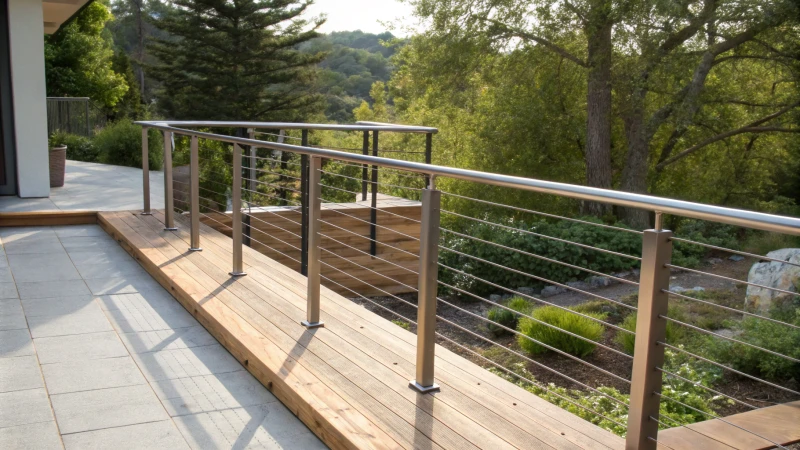
Durability and Maintenance
Aluminum lasts long without rusting or corroding, making it ideal for outdoor areas3. It really stands up well in these environments. Wooden railings can warp or even rot with too much moisture, which becomes a problem. Steel stays strong but requires protective coatings to avoid rust.
Aesthetic Appeal
Wood railings bring warmth and classic charm, much like a cozy sweater. You really can paint or stain them to match any decor style. Aluminum appears sleek and modern with various finishes, often looking contemporary. Steel gives an industrial look and is popular in urban settings.
| Material | Durability | Maintenance | Aesthetics |
|---|---|---|---|
| Aluminum | High | Low | Modern |
| Wood | Moderate | High | Classic/Natural |
| Steel | Very High | Moderate | Industrial |
Cost Considerations
Aluminum railings probably save money over time since they need less maintenance. Wood starts cheaper but maintenance costs increase. Steel costs more initially, yet its durability often justifies this expense for certain projects4.
Environmental Impact
Wood is renewable when harvested sustainably; however, this involves cutting trees. Aluminum requires a lot of energy to produce, but it is fully recyclable. Steel is extremely durable but its production leaves a large carbon footprint.
For more insights on choosing an eco-friendly option for your project, check sustainable building practices5. You could find help there for decisions that care for our planet.
Aluminum railings are more rust-resistant than steel.True
Aluminum naturally resists rust, unlike steel, which needs protective coatings.
Wood railings require less maintenance than aluminum.False
Wood needs regular upkeep to prevent rot, while aluminum requires minimal maintenance.
How Do You Keep Aluminum Railings in Great Shape?
Aluminum railings look stylish and last long on any deck or porch. They need care like our favorite leather boots. Here is how to care for them properly.
To keep aluminum railings in very good condition, wash them often with mild soap and water. Check for any damage. Tighten loose bolts. Wax also helps. Wax keeps the shine nice and guards against wear.
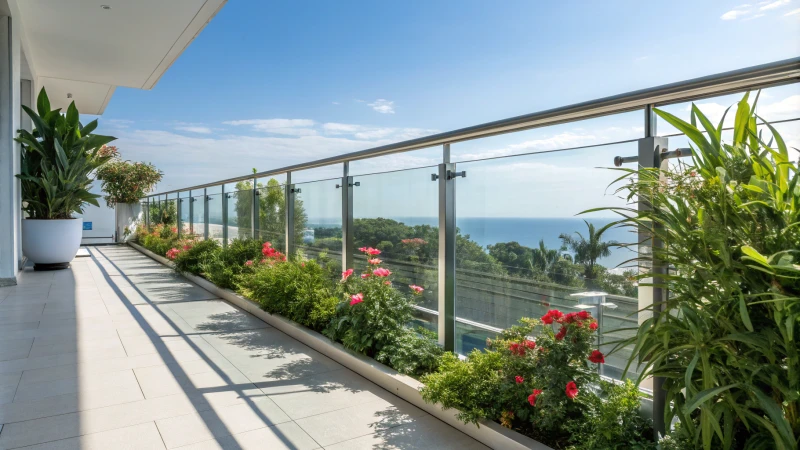
Regular Cleaning Routine
Cleaning aluminum railings is like washing a beloved car. The first time I cleaned mine, basic soap and water brought back a shiny look. A soft cloth or sponge helps prevent scratches on the surface. Always rinse well to remove any soapy bits left behind.
Inspection for Damage
Inspect railings for damage like checking car tires for air. Look for corrosion spots6 and scratches that may expose the metal underneath. These are big warnings that need fixing before they cause bigger problems. My rule? Fix issues early.
- Common Issues: Corrosion, loose screws, chipped paint
- Tools Needed: Screwdriver, touch-up paint
Tightening Bolts and Fasteners
Once I felt a wobble while leaning on my railings at sunset. This meant bolts needed tightening. Now, I check all bolts and fasteners during each cleaning session.
| Bolt Type | Recommended Tool |
|---|---|
| Standard Bolt | Wrench |
| Hex Bolt | Allen Key |
A simple screwdriver or wrench really helps.
Applying Protective Coatings
A protective wax coating adds an extra protective layer. It is like applying sunscreen before visiting the beach. This coating shines and guards against weather-related damage7. For me, doing this every six months works very well.
- Frequency: Every six months
- Product Suggestions: Carnauba wax, silicone-based spray
Understanding Environmental Factors
Environmental conditions affect how often railings need cleaning. Living near the coast taught me saltwater harms aluminum, leading to salt corrosion8. So, I clean more often.
Consider crafting a maintenance plan based on your location:
| Environment | Cleaning Frequency |
|---|---|
| Coastal | Monthly |
| Urban | Every 2 months |
| Rural | Quarterly |
Following these steps keeps aluminum railings very well maintained. Completing this task brings satisfaction similar to finishing an enjoyable DIY project on a sunny weekend.
Aluminum railings need weekly cleaning.False
Routine cleaning is recommended but not specifically weekly; frequency depends on environment.
Coastal environments require monthly railing cleaning.True
Salt exposure in coastal areas necessitates more frequent maintenance to prevent corrosion.
Are Aluminum Railings Environmentally Friendly?
Initially, I considered installing railings and questioned whether aluminum was the environmentally friendly option I desired. Aluminum might be a green choice.
Aluminum railings offer a sustainable choice because they are recyclable and durable. They never rust. These railings require very little maintenance. They last for decades. This quality makes them an eco-friendly option for any outdoor area. Indeed, aluminum railings are eco-friendly.
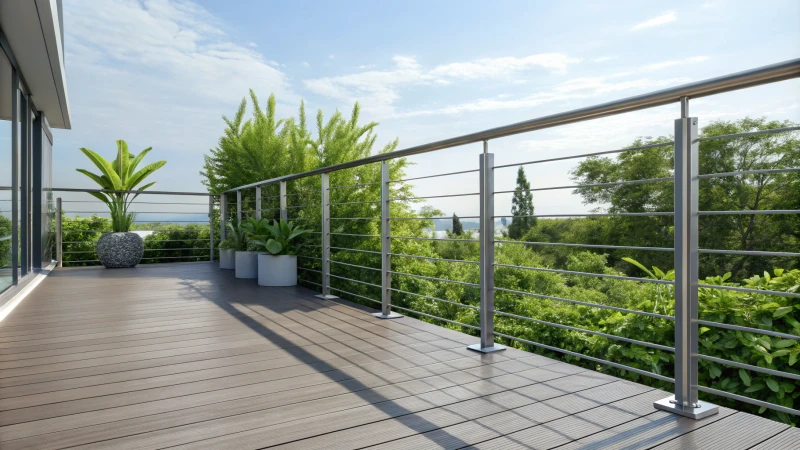
Recyclability and Longevity
I remember my old wooden railings rotting after a few years. Replacing them again so soon seemed dreadful. Then, I found aluminum. Aluminum ranks among the most recyclable materials. Almost 75% of all aluminum ever produced remains in use today, thanks to its ability to be recycled repeatedly without degradation. So, aluminum railings9 are perfect for those who really care about the environment. Really, they’re a clear choice as they do not rust and can last for decades with almost no upkeep.
Environmental Impact of Production
Producing aluminum requires energy; it’s not completely green. Yet, technology continually improves, leading to a decrease in emissions over time. Modern smelting often uses renewable energy sources, giving aluminum a smaller carbon footprint than expected. Delving into details reveals that aluminum production10 grows greener.
Maintenance and Durability
Let’s mention maintenance – or rather, the lack of it! Wooden railings demanded many weekends of sanding and sealing to prevent warping or rotting. Aluminum railings? They offer a different experience as they resist weather, insects, and almost everything else. Such durability implies fewer replacements and repairs, saving both money and the planet. The long-term durability11 of aluminum makes it a smart financial choice.
| Material | Recyclability | Longevity | Maintenance |
|---|---|---|---|
| Aluminum | High | Decades | Low |
| Wood | Moderate | Varies | High |
| Steel | High | Long | Moderate |
Comparison with Other Materials
Each material presents its pros and cons. When comparing aluminum with other materials like wood or steel, it becomes evident that each has its own set of advantages and drawbacks. Wood is biodegradable but needs chemical treatments for longevity, which isn’t eco-friendly. Steel can be recycled yet rusts more easily than aluminum without special coatings or treatments. Understanding these differences12 helps when selecting materials.
Contribution to Sustainable Construction
Using aluminum in buildings goes beyond just meeting sustainability goals; it aligns with eco-friendly standards like LEED certifications by enhancing energy efficiency and reducing resource use over time. Builders who value green architecture might find aluminum13 an intelligent choice as it supports sustainable practices in construction.
Aluminum railings are 100% recyclable.True
Aluminum can be recycled repeatedly without losing quality, making it fully recyclable.
Wood railings require less maintenance than aluminum.False
Wood requires more maintenance due to susceptibility to rot and insects.
Conclusion
Aluminum railings are durable, low-maintenance, and eco-friendly options for homes. They resist rust and weather damage while offering aesthetic versatility, making them ideal for outdoor spaces.
-
Discover how easy it is to maintain aluminum railings compared to other materials. ↩
-
Explore how choosing aluminum railings supports sustainable practices. ↩
-
Discover how aluminum’s resistance to weather elements makes it a superior choice for outdoor installations. ↩
-
Learn why investing in steel railings might pay off over time despite higher initial costs. ↩
-
Gain insights into eco-friendly choices for railing materials to ensure environmental responsibility. ↩
-
Discover effective methods to treat and prevent corrosion on aluminum railings for lasting durability. ↩
-
Learn about top-rated protective coatings that can enhance the longevity of your aluminum railings. ↩
-
Understand how saltwater affects aluminum and ways to mitigate its corrosive effects. ↩
-
Learn more about how aluminum can be recycled and its benefits for eco-friendly construction. ↩
-
Discover advancements in sustainable aluminum production that reduce environmental impact. ↩
-
Understand why aluminum railings require less maintenance than other materials. ↩
-
Compare different railing materials to find the best fit for your environmental goals. ↩
-
Explore how using aluminum railings can contribute to eco-friendly building practices. ↩

